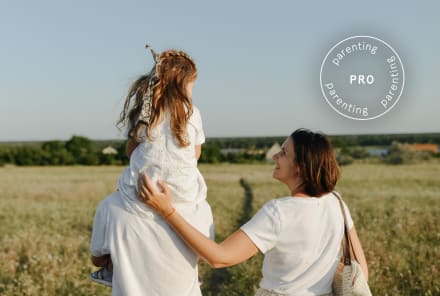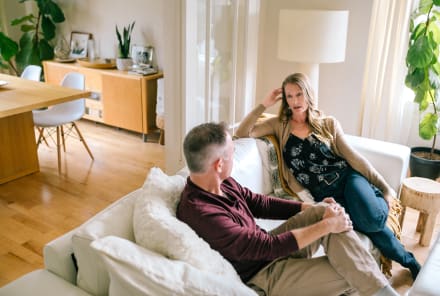Advertisement
It's hard to be a kid today. Children deal with many distractions, temptations, overstimulation and peer pressure. Schools are challenged to do more with less and be creative in how they reach even the most isolated child. Yoga is a low-cost, helpful tool that can have a positive impact on children.
Here are some of the many benefits of teaching yoga to kids:
Yoga helps kids to:
- Develop body awareness
- Learn how to use their bodies in a healthy way
- Manage stress through breathing, awareness, meditation and healthy movement
- Build concentration
- Increase their confidence and positive self-image
- Feel part of a healthy, non-competitive group
- Have an alternative to tuning out through constant attachment to electronic devices
In a school setting, yoga can also benefit teachers by:
- Giving them an alternate way to handle challenges in the classroom
- Giving them a healthy activity to integrate with lesson plans
- Give them a way to blend exercise into their classes
Here's what your kids can expect to learn in yoga class:
Awareness of the breath
Breathing exercises can energize kids or encourage relaxation, depending on what you teach. Different games and techniques help kids connect to how their bodies feel as a result of deep breathing. Focus increases, as does their breathing and lung capacity. Stress is naturally reduced and healthy hormones are released.
Strengthening and energizing
Kids think that yoga is great for stretching, but doesn't build strength. It's important for a teacher to include conversations, as well as exercises around how helpful yoga is for building strength. Talking about the different muscles used in poses and incorporating games and sequences will help build strength as well as body awareness and coordination. Bodies that are strong digest food better, maintain a healthy weight and can support the stress of carrying heavy loads, like a backpack. Bodies will also breathe better, work more efficiently and protect the more fragile joints.
Balancing
Balancing poses teach children that with increased focus, you can increase attention naturally, even in kids who struggle with different attention challenges. Poses and games focused on balancing skills, develop an intrinsic strength, evoke a meditative feeling, and promote stillness and quieting of the mind. This can help kids deal with the stress of living in a chaotic world where constant stimulation is a regular part of life.
Stretching and lengthening
It's great for kids to be strong, but a body that's only based on strength has no way to yield under pressure. Strong muscles without accompanying flexibility can't move quickly, pulling on bones and joints. Yoga poses stretch muscles and through integrating breathing and movement, muscles become warm and become more flexible. They can yield when they need to, and support tender joints in a more functional way.
Awareness and focus
Yoga helps create awareness in the body through deep breathing and movement. It gives kids a way to express themselves, build a strong connection between what they hear and what they do. Children that have healthy body awareness are more confident and strong, have better posture, breathe better and have a sense of quiet strength.
Flowing, connecting and integrating
When we string poses together, we give kids a taste of what it means to move with ease. It also helps them build the awareness that all our movements are a series of coordinated efforts between muscles, bones, joints and nerves. Older kids are more able to isolate different muscle groups and get more sophisticated about movements; things like keeping the arms lifted in Warrior 1, while at the same time, dropping the shoulders to relax them. All these things together increase a child's sense feeling integrated.
Meditation and relaxation
Yoga is meditative by nature. So whether a child is holding a balancing posture, sitting in meditation or moving through a series of poses, there's going to be a calming, soothing quality. Giving younger kids something to do as they rest on their mats will help with their attention, such as suggesting they think of a favorite color or toy. Older kids will find it easier to rest longer with less structure.
There are lots of tools you can use to teach yoga to children. The young ones like games, doing poses from yoga books for children and singing songs with big, expressive movements. Older children love to create their own poses, be challenged by balancing and learn about the muscles and other aspects of anatomy.
Watch Next
Enjoy some of our favorite clips from classes
Enjoy some of our favorite clips from classes
What Is Meditation?
Mindfulness/Spirituality | Light Watkins
Box Breathing
Mindfulness/Spirituality | Gwen Dittmar
What Breathwork Can Address
Mindfulness/Spirituality | Gwen Dittmar
The 8 Limbs of Yoga - What is Asana?
Yoga | Caley Alyssa
Two Standing Postures to Open Up Tight Hips
Yoga | Caley Alyssa
How Plants Can Optimize Athletic Performance
Nutrition | Rich Roll
What to Eat Before a Workout
Nutrition | Rich Roll
How Ayurveda Helps Us Navigate Modern Life
Nutrition | Sahara Rose
Messages About Love & Relationships
Love & Relationships | Esther Perel
Love Languages
Love & Relationships | Esther Perel
What Is Meditation?
Box Breathing
What Breathwork Can Address
The 8 Limbs of Yoga - What is Asana?
Two Standing Postures to Open Up Tight Hips
How Plants Can Optimize Athletic Performance
What to Eat Before a Workout
How Ayurveda Helps Us Navigate Modern Life
Messages About Love & Relationships
Love Languages
Advertisement

Your Grandma's Go-To Supplement Is Once Again Popular (For A Good Reason)
Molly Knudsen, M.S., RDN

Your Grandma's Go-To Supplement Is Once Again Popular (For A Good Reason)
Molly Knudsen, M.S., RDN










